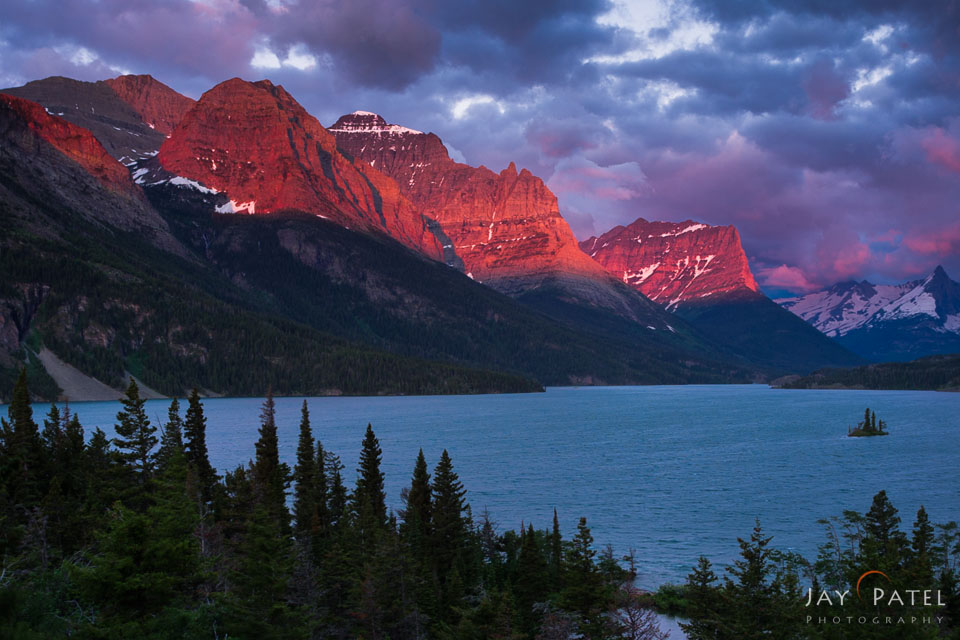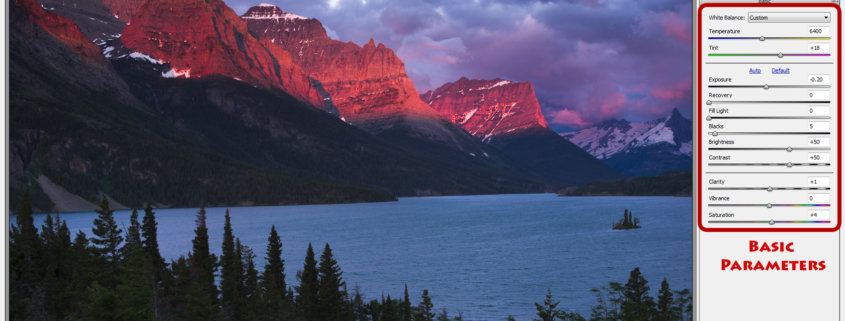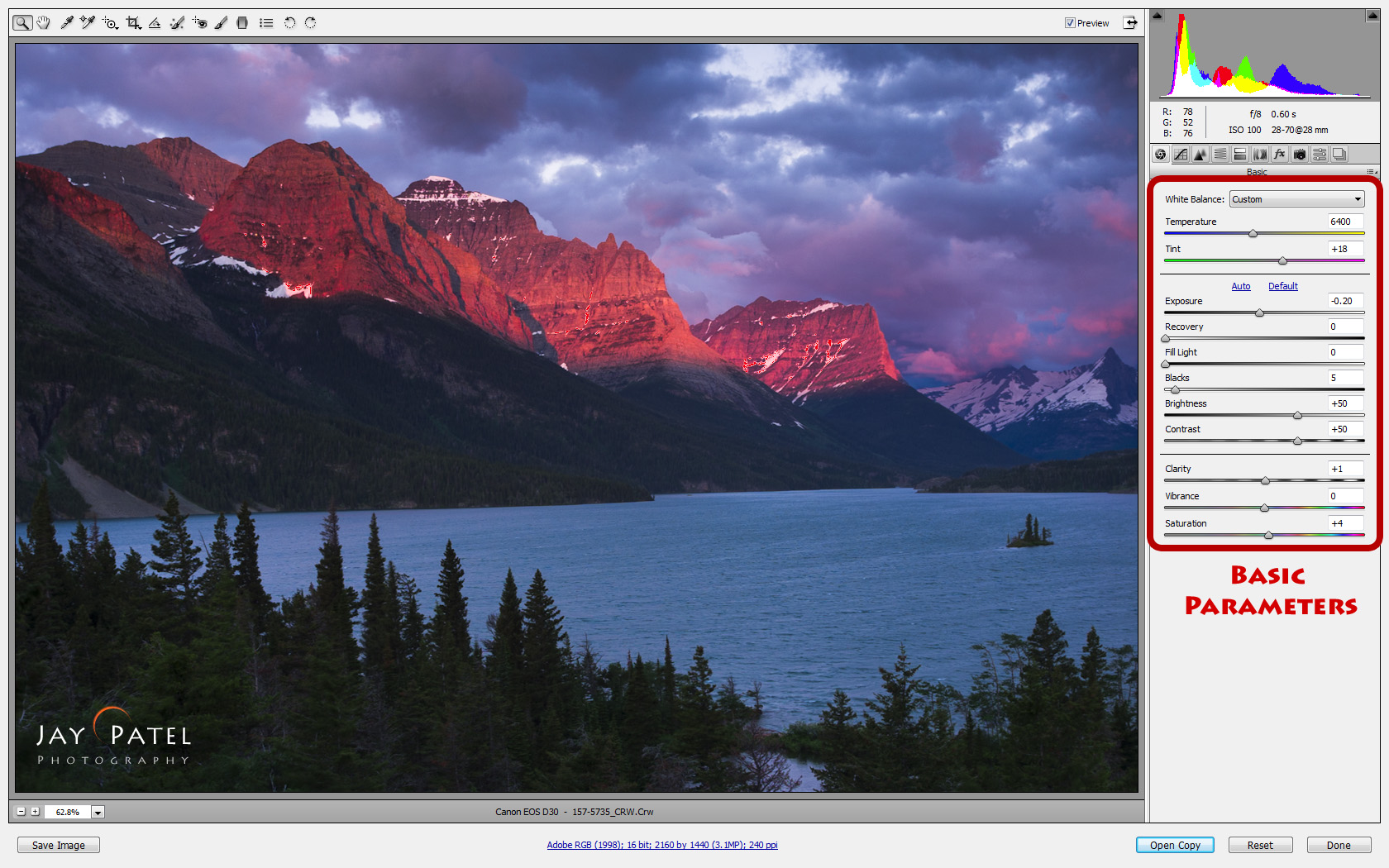Is it Photoshopped?
 Sometimes when people look at our photographs, they ask if the colors are manipulated. Have people told you your photos look “fake”, “too HDRish”, or that you used too much “photoshop magic”? One of our personal favorites is the assertion that “Photoshop ruined photography.”
Sometimes when people look at our photographs, they ask if the colors are manipulated. Have people told you your photos look “fake”, “too HDRish”, or that you used too much “photoshop magic”? One of our personal favorites is the assertion that “Photoshop ruined photography.”
Believe me, we’ve heard it all. So, what’s our answer to all this? When someone asks if we photoshop our photos, we simply say “Yes”. The fact is, we use Photoshop for every single image we take because we shoot only in RAW. We need to choose the proper settings in Adobe’s RAW converter.
But how much manipulation are we really using? Each image is different, but here’s a typical photograph – and the settings we used in Adobe Camera RAW. (Click on the image to see it at a larger size.)
The most important setting is color balance. The wrong color balance will make the whole image look weird. Jay chose a setting that showed the colors as he remembered them. He also bumped up the color saturation by about 4%. (Varina often leaves this setting at zero.) Straight-out-of-the-camera images shot with Velvia film will have far more saturated colors.
In many cases, we’ll use manual blending to bring out details in over or under exposed areas. And we may use targeted adjustments – similar to the way Varina used to use burning and dodging in the darkroom. We use Photoshop to help us bring out details in areas that the camera can not handle properly because the range of light in the image.
So, what’s the secret to getting those brilliant colors? Look for conditions that produce intense colors (like sunrise and sunset), get your settings right in-camera, and follow up with subtle processing.





Hey Varina,
I think trying to phrase the issue as: “Is it photoshopped or not” misses the larger point. Useful discussion about meaningful art should centre around what the piece is about not how it was made. Nowhere else but photography does the ‘how’ supersede the ‘what’ more often. I think that’s a shame!
Very well said, Samantha! You’ve hit the nail on the head. It really does come down to exactly that.
I am very new to photography, but so far I understand, raw needs PS. The JPGs out of camera are already processed by the camera default software. We would just do the same with raw in PS. When we compare the jpg and raw of same exposure, there is a drastic difference. I atleast consider raw as a film negative. It needs basic processing. PS is studyroom while previous version was darkroom. Appreciate Jay and Varina for their work.
Regards,
Sourav
Kolkata, India
Thanks, Sourav. That’s exactly right. Your RAW file is your digital negative, and basic adjustments in a RAW converter are a necessary part of the process of creating a photograph. Many people don’t understand that JPG files are processed by the camera.
Excellent article…it’s the two moons in the sky sort of “digital art” that people confuse with photography.
Thanks Katherine!
I don’t use photoshop for my pictures,
1: I have not tried it yet
2: ever though it’s hard to do I try to capture the picture in its natural color
Not saying I would never use it, just not yet.
Capturing colors in-camera with proper exposure and lighting (etc) is very important, Barry – but if you want your colors to look the way they did in nature, you may need to fine-tune your color balance in your RAW converter. In-camera default settings aren’t bad in some cases, but they are rarely spot on. I hope you have a chance to give it a try sometime! Good luck with your photography!
Well, using one of the greats by way of example. Ansel Adams had a selection of colored filters, various ASA and contrast films. The same can be said for his selection of print papers. Then hours of darkroom time per print, as he manipulated contrast, exposure, and development time, types and concentrations of developers, and dodged and burned for hours on end. And then again, he avoided color, because he felt he didn’t have as much control.
In skilled hands, PS is the modern day equivalent of all those independent processes AA used 70 years ago.
I couldn’t agree more, Bertha. :) Thanks for your comment. Your example is perfect.